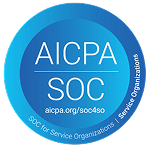FAQs
 Can Indian students get financial aid in the U.S. or Canada?
Can Indian students get financial aid in the U.S. or Canada?
Yes, but options like government aid are often unavailable. Indian students can access scholarships, private loans, grants from universities and work-study programmes to help fund their education. Additionally, some Indian government scholarships are available for studying abroad.
 What’s the best way to find scholarships for Indian students?
What’s the best way to find scholarships for Indian students?
Start by researching scholarships offered by the university you’re applying to, then branch out to external scholarships and international organisations. Online platforms like ScholarshipPortal and IEFA‘s scholarship database can help you find scholarships specific to Indian students. Also check with the Indian government’s educational departments and Indian corporate foundations that offer study abroad scholarships.
 Are there loans available for Indian students without a cosigner?
Are there loans available for Indian students without a cosigner?
Yes, several lenders specialise in no-cosigner loans for Indian students, focusing on future earning potential rather than credit history or requiring a cosigner. Additionally, some Indian banks offer education loans for studying abroad, though they may require collateral instead of a cosigner.
 How can I combine different types of financial aid?
How can I combine different types of financial aid?
The best approach is to secure as many scholarships and grants as possible, then use loans to cover any remaining costs. Add work-study opportunities if available to offset living expenses. Indian students can also explore combining Indian bank loans with international funding options for optimal financial support.
